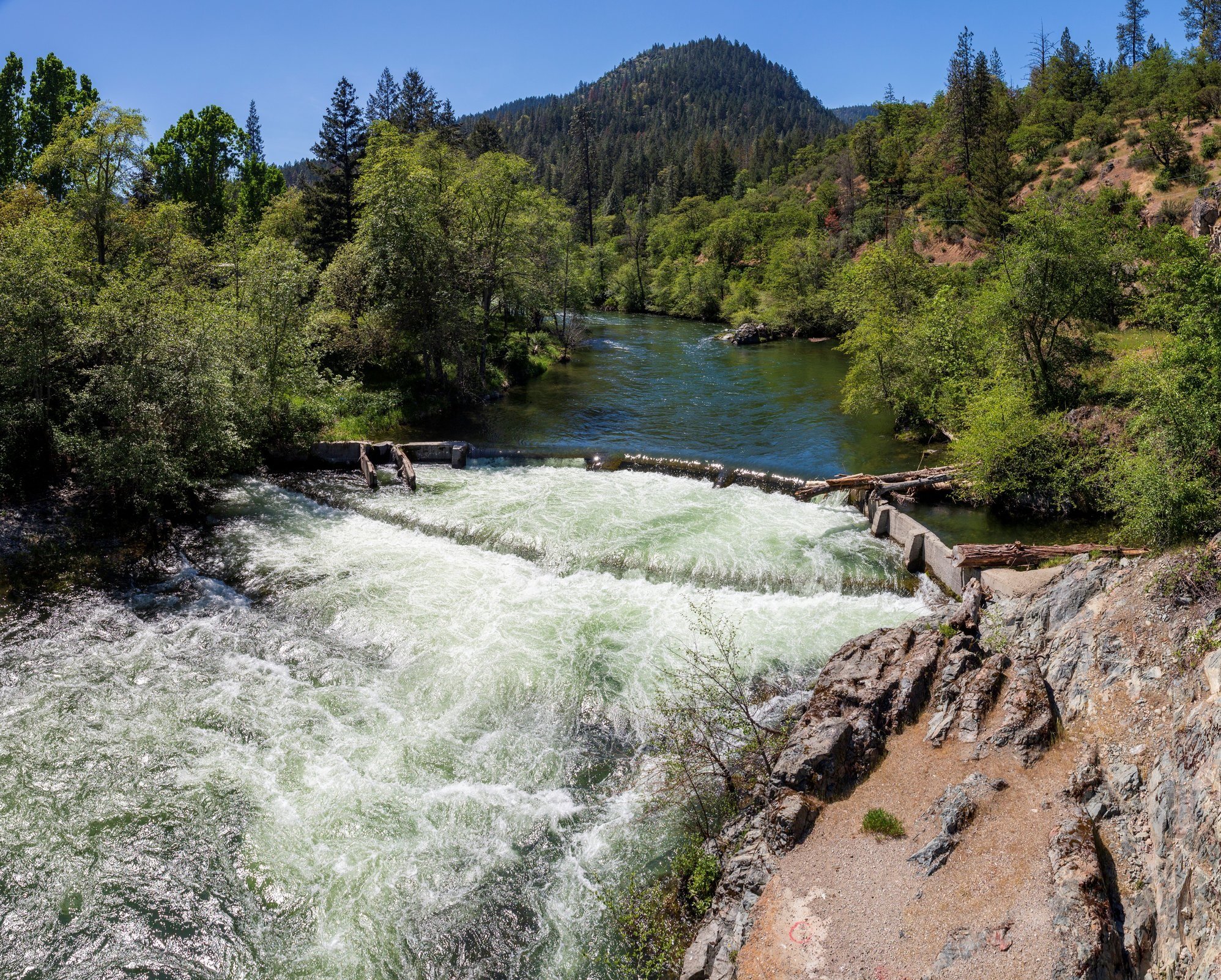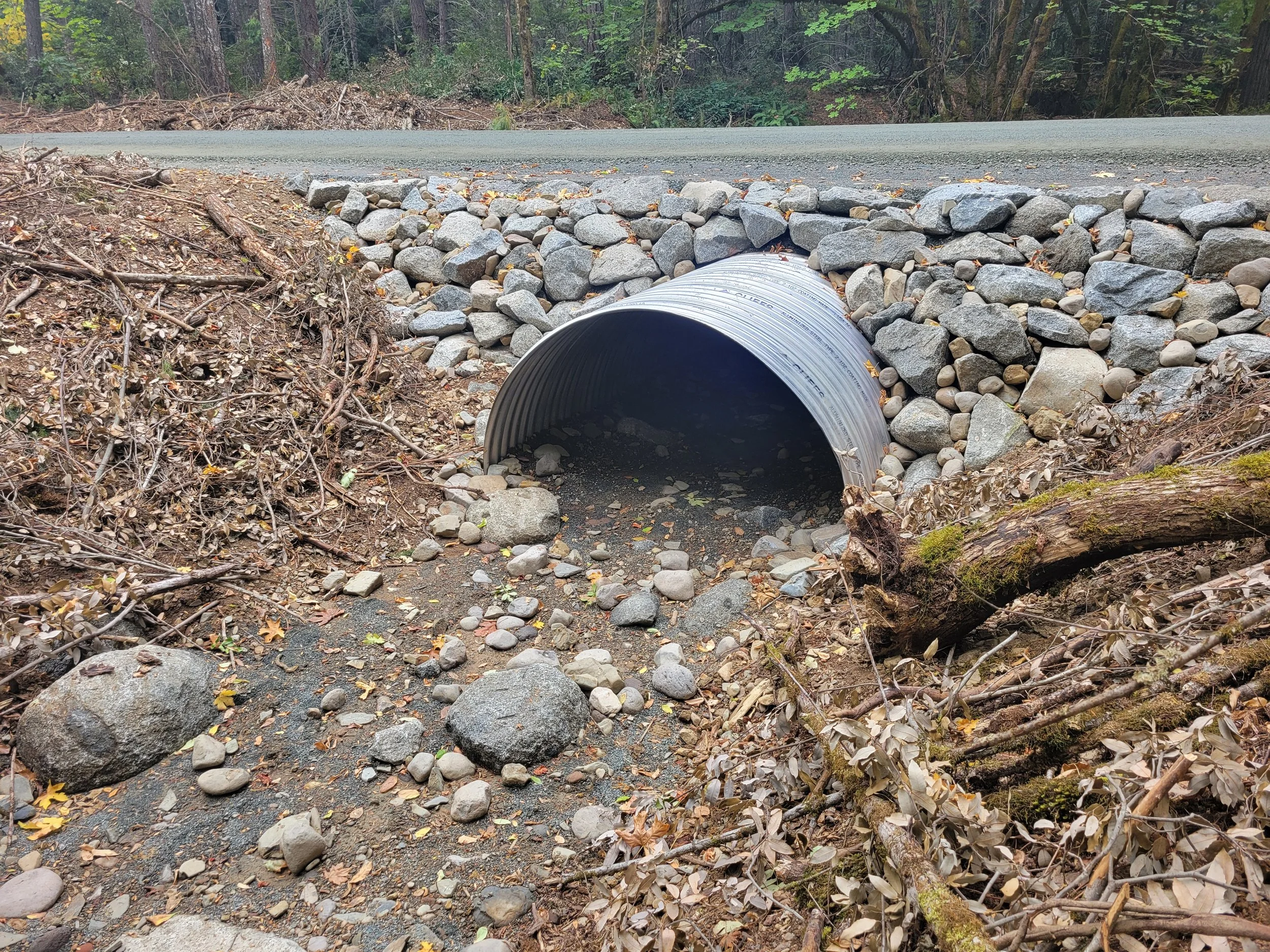
Fish Passage
What is Fish Passage?
Fish passage is the ability of fish or other species to move through an aquatic system among all habitats necessary to complete their life cycle. It is the policy of the State of Oregon to provide for the upstream and downstream passage for native migratory fish including, but not limited to, Chinook salmon (Oncorhynchus tshawytscha), Coho salmon (Oncorhynchus kisutch), Steelhead (Oncorhynchus mykiss), and Pacific lamprey (Entosphenus tridentatus). Fish passage projects remove or restore barriers and reconnect aquatic habitats that support healthy fisheries.
For more information surrounding fish passage rules and regulations, please visit the Oregon Department of Fish and Wildlife website here, or the U.S. Fish & Wildlife Service website here.
Our Fish Passage Projects
Video credit:
Resources Legacy Fund
Lower Bridgepoint Project -
Williams Creek, Provolt
The APWC partnered with water users along the Lower Bridgepoint Ditch including Blue Fox and Whistling Duck Farms and the Bureau of Land Management (BLM) on this fish passage and irrigation upgrade project on Williams Creek. Williams Creek contains some of the most important spawning and rearing habitat for Endangered Coho salmon, Chinook Salmon, Pacific lamprey, and summer and winter steelhead within the Applegate Watershed. The project updated the irrigation system, and improved fish passage. A new irrigation diversion was installed, and a pushup dam will no longer need to be constructed. A new headgate, and 3/4 mile of pipeline improved the irrigation diversion, reduced maintenance, and saved at lease 30% more water. The project was constructed in 2020 by Dietrich Construction, LLC of Grants Pass.
Upper Phillips Fish Passage &
Irrigation Efficiency Project -
Little Applegate River, Ruch
The first phase of this project, completed in 2021, addressed Upper Phillips dam, a major barrier to fish passage on the Little Applegate River. A concrete dam and seasonal push-up dam had long impeded the migration of juvenile salmonids. To resolve this, APWC and its partners enhanced a side channel around the dam, installing logs and boulder weirs to create a fish bypass channel that is passable year-round. This modification eliminated the need for the push-up dam and restored access to spawning habitat upstream. Additionally, a new headgate, fish screen, and measuring device were installed at the irrigation intake, improving water management for local irrigators.
Forest Creek Dam Project -
Forest Creek, Ruch
Forest Creek Dam was the lowest, most severe fish passage barrier to Coho salmon, steelhead, and cutthroat trout on Forest Creek, a tributary of the Applegate River. The concrete dam was no longer used to fill log ponds and was causing erosion issues for the landowners. The dam was removed and the stream channel was restored to a natural profile. The project was completed by a local contractor with local materials in 2019. Native plants were planted onsite and logs and boulders were placed in the stream to enhance fish habitat.
Cheney Creek Culvert Replacement Project -
Cheney Creek, Murphy
In 2025, APWC replaced an aging, perched culvert on a tributary to Cheney Creek, restoring access to important off-channel habitat used by coho salmon and steelhead during high flows. The new embedded culvert allows for natural streamflow and fish passage year-round, and improves connectivity in an area that supports some of the most active spawning habitat in the Applegate watershed.
Lamprey Passage Improvement Project - Various Locations
APWC partnered with a local lamprey biologist, Stewart Reid, PhD, in 2020 to mitigate passage issues at six dam sites in the Applegate Valley. Reid developed a strategy that involved beveling the corners of cement dams using a battery-powered angle grinder, masonry chisel, and three-pound hammer; this method doesn’t affect the operation or integrity of the concrete structures in anyway. Lamprey are unable to traverse ninety-degree corners on cement structures. If the the edges are rounded, lamprey are able to maintain suction with their mouths and climb vertical barriers in the river system. Rounding the edges of concrete dams allows lamprey to travel up and over barriers to reach suitable areas to spawn as they make their way upstream from the ocean during the spring-summer months.
Palmer Creek Dam Project -
Palmer Creek, Ruch
Palmer Creek Dam was located on Palmer Creek, 0.4 miles upstream from its confluence with the Applegate River. The concrete dam was obsolete because it was no longer used for irrigation after the water users moved to a pump system on Applegate River. The dam limited access for endangered Coho salmon and steelhead on Palmer Creek to spawning and rearing habitat upstream. The dam was removed in 2017 by a local contractor and the natural stream profile was restored. The headgate to the ditch was filled in to reduce the risk of trapping and mortality of out-migrating fish. In addition, the APWC placed logs in the stream channel to create complex habitat for spawning and rearing fish species.
Hartman Dam Project -
Humbug Creek, Applegate
Hartman Dam (river mile 3.8) was located on Humbug Creek, a tributary of Applegate River. The 4-foot-high concrete dam was obsolete because it was no longer used for irrigation. The dam limited access for cutthroat trout to habitat upstream. The dam was removed in 2018 by a local contractor. Logs were placed instream to improve fish habitat and reduce erosion at the site.
Jamison Dam Project -
Jamison Creek, Applegate
The APWC removed this dam in 2018 at the request of the landowner who wanted to improve fish habitat. Jamison Dam was an abandoned concrete diversion structure and fish passage barrier located at river mile 0.4 on Jamison Creek. Jamison Creek is a tributary of Thompson Creek, which is a major tributary of the Applegate River. Jamison Creek provides essential refugia for juvenile fish and year-round habitat for steelhead and cutthroat trout. This dam impeded adult fish passage and completely blocked juvenile fish passage.








